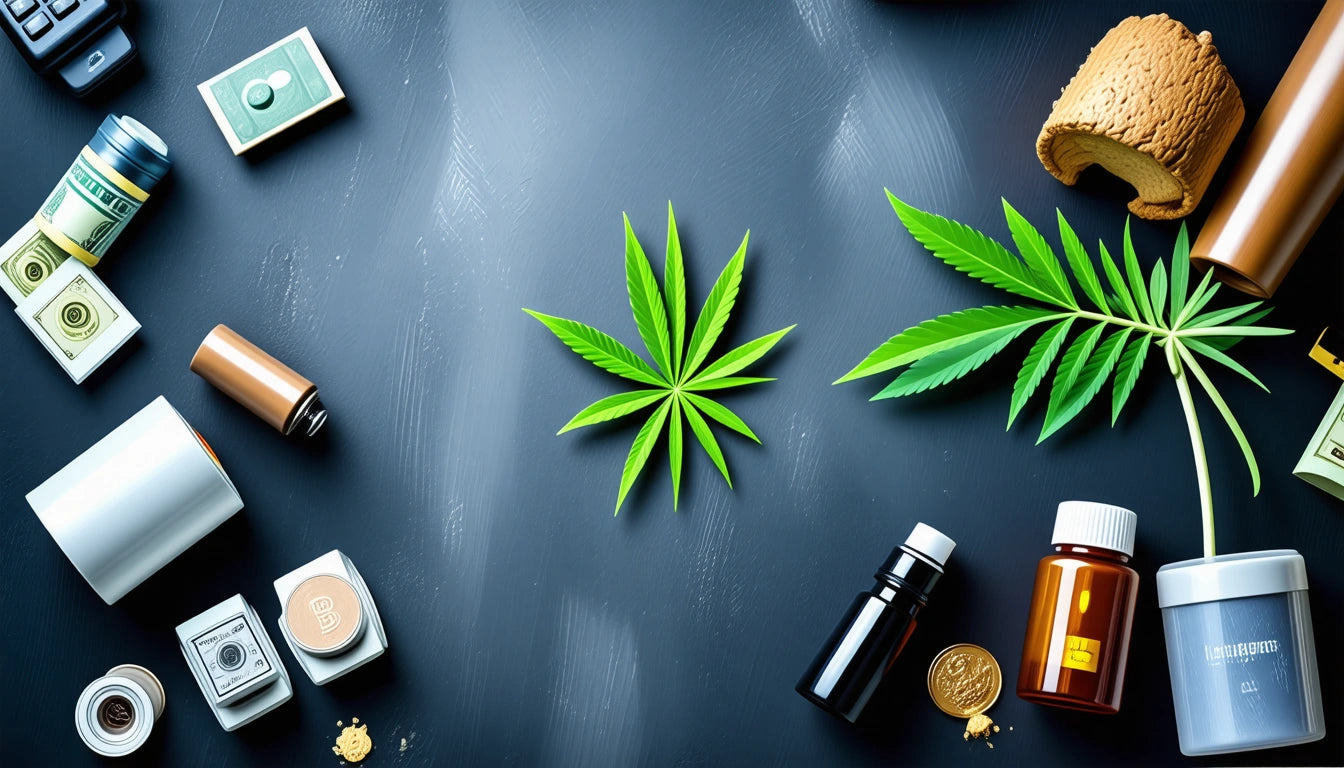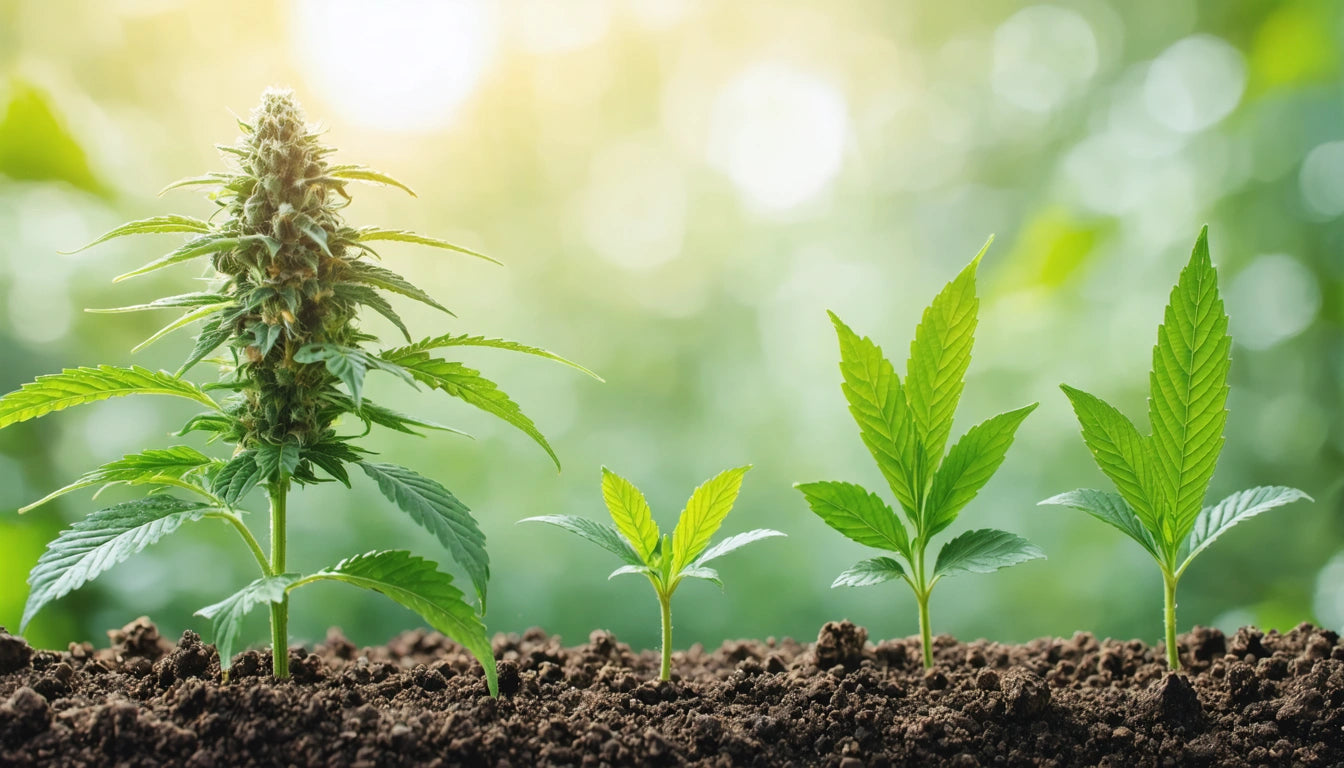Table of Contents
Comparing Different Shades and Types of Black: A Guide to Choosing the Right Black for You
Black might seem straightforward at first glance, but this versatile color encompasses numerous variations, each with unique properties and applications. Whether you're selecting packaging materials, designing print materials, or choosing between premium rolling papers like RAW Black vs Classic, understanding the nuances between different blacks can significantly impact your final product.
Understanding Black Variations in Design and Printing
Black is far more complex than it appears. In design and printing, black exists on a spectrum with variations determined by pigment composition, printing methods, and material interactions. These differences become particularly important when creating consistent branding or packaging across multiple products.
According to our guide on color models, blacks are represented differently across CMYK, RGB, and PMS systems. In CMYK printing, for instance, black can be created using just the K (black) channel or by combining all four color channels to create a richer, deeper black.
Plain Black vs Rich Black: Key Differences
Plain Black (K-only Black)
Plain black, sometimes called "process black" or "single-channel black," uses only the K (black) channel in CMYK printing. It typically appears as:
- Less dense with a slightly grayish undertone
- CMYK value of C0 M0 Y0 K100
- More economical for large print runs
- Ideal for text and line art
Rich Black (Designer Black)
Rich black combines black ink with other colors to create a deeper, more saturated appearance:
- Appears darker and more intense than plain black
- Common CMYK formula: C60 M40 Y40 K100 (can vary)
- Better for large areas of black in designs
- Provides greater depth and dimension
When selecting packaging materials, the distinction between plain black vs rich black becomes crucial for brand consistency. For premium products, rich black often communicates luxury and attention to detail, while plain black works well for text legibility on informational materials.
RAW Black vs Classic: Comparing Premium Rolling Papers
In the realm of rolling papers, RAW offers different variants that showcase how black can signify product differentiation:
RAW Black
RAW Black represents the brand's ultra-thin premium line:
- Ultra-thin construction (thinner than RAW Classic)
- Appears slightly darker due to density and material composition
- Features a distinct black line on the packaging
- Marketed as their "thinnest paper ever"
RAW Classic
The original RAW papers feature:
- Natural brown coloration
- Standard thickness (thicker than RAW Black)
- Distinctive unbleached appearance
- Recognized by the classic RAW branding
The difference between RAW Black vs Classic isn't actually about color but about thickness and premium positioning. Both use unrefined, unbleached papers, but RAW Black offers an ultra-thin experience for consumers seeking minimal paper presence.
When selling these products, proper storage is essential. Our selection of specialized jar caps and lids provides airtight sealing options that help preserve product freshness and prevent contamination, which is particularly important for premium papers and related products.
Blackest Black Technologies and Materials
The quest for the blackest black has led to fascinating technological developments:
Blackest Black vs Very Black
The distinction between "blackest black" and "very black" often refers to light absorption capabilities:
- Vantablack: Absorbs up to 99.965% of visible light
- Black 3.0: Artist-accessible ultra-black paint (absorbs 98-99% of light)
- Musou Black: Consumer paint that absorbs 99.4% of visible light
These ultra-black materials find applications in astronomy, photography, and artistic installations where light absorption is critical. The difference between blackest black vs very black often comes down to specific light absorption percentages and proprietary technologies.
Understanding how colors interact is essential when working with these extreme blacks. Our resource on primary, secondary, and tertiary colors provides context for how these ultra-blacks interact with other colors in design applications.
RAW vs Elements: Brand Comparison
When comparing RAW vs Elements rolling papers, several distinctions emerge:
RAW Papers
- Unrefined, unbleached brown appearance
- Multiple thickness options (Classic, Black, Organic)
- Hemp-based material
- Distinctive watermark and criss-cross imprint
Elements Papers
- Rice paper composition
- Cleaner white/translucent appearance
- Ultra-thin design
- Water-marked with wind-powered production emphasis
While both brands offer premium rolling papers, their color and material differences create distinct user experiences. Elements' rice papers burn with minimal ash, while RAW's unbleached appearance appeals to those seeking a more natural aesthetic.
Choosing the Right Black for Your Specific Needs
Selecting the appropriate black variant depends on your specific application:
- For premium packaging: Rich black creates depth and luxury appeal
- For text-heavy documents: Plain black ensures readability and economical printing
- For ultra-thin rolling papers: RAW Black offers minimal material presence
- For artistic applications: Consider specialized ultra-black materials for maximum light absorption
The right black choice should align with both functional requirements and brand positioning. Premium products often benefit from richer blacks that communicate quality and attention to detail, while everyday applications may be better served by standard blacks that prioritize clarity and cost-effectiveness.
As black continues to evolve with new technologies and applications, staying informed about the latest developments ensures you'll always select the optimal black variant for your specific needs. Whether you're designing packaging, creating print materials, or selecting premium products, understanding these nuances allows you to make informed decisions that enhance your final result.











Leave a comment
All comments are moderated before being published.
This site is protected by hCaptcha and the hCaptcha Privacy Policy and Terms of Service apply.